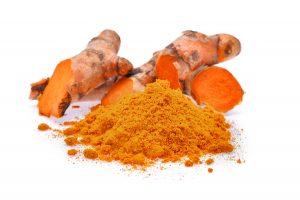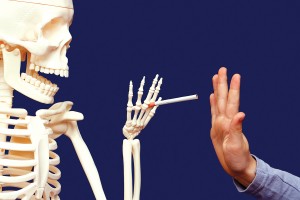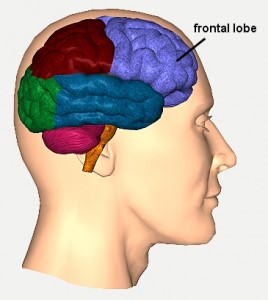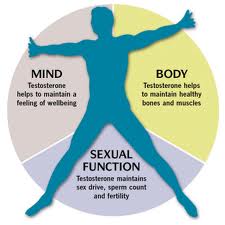A review article of CNN reviewed how male fertility could be improved naturally. Studies have shown that males contribute about 40 to 50% of the responsibility of any fertility problem of the couple. This means that a couple with infertility issues will benefit from interventions that include the male partner. Dr. Natan Bar-Chama is the director of the Center of Male Reproductive Health in New York. He is a board-certified urologist and male infertility specialist. Dr. Bar-Chama has done research into what affects male fertility. He found that there are several factors that are important for male fertility.
Lifestyle factors
The big factors that interfere with fertility are obesity, caffeine and alcohol intake, smoking, marijuana intake, lack of exercise and wearing too tight underwear resulting in increased scrotal temperature.
Obesity
Overconsumption of refined carbs like sugar and processed foods leads to obesity. The best for him is to change his diet to a Mediterranean diet. This supports weight loss and at the same time improves sperm quality.
Obese men tend to father children that often are not viable. It may be that it is due to genetic changes in the sperm in obese men. These changes can affect fertilization, but also embryo development. Researchers have detected sperm DNA fragmentation in sperm from obese men, which can lead to pregnancy loss. Weight loss in obese men improves sperm quality.
Caffeine and alcohol intake
More than 1 or 2 cups of coffee a day relates directly to difficulties for a couple to conceive. When it comes to alcohol intake, the male should not drink more than one glass of wine or the equivalent of alcohol in beer or spirits per day. Higher consumption results in male infertility due to poor sperm quality. Physicians have warned women for a long time that they should stop drinking alcoholic beverages, if they want to become pregnant. It is best, if both partners don’t drink for the sake of a healthy pregnancy.
Smoking
Stop tobacco and drug use. Smoking and drug abuse have been consistently shown to be bad for sperm quality and are associated with infertility. Marijuana use leads to low sperm counts, which is a cause of infertility.
Lack of exercise
Moderate aerobic exercise and resistance exercise can improve sperm quality.
However, excessive exercise has shown negative effects on sperm. Bicycling for 5 hours or more has been shown to reduce sperm quality due to the heating up of the scrotum and the testicular tissue. For the same reason men wearing boxer shorts instead of tight underpants were observed to have higher sperm concentration and sperm counts.
Antioxidants
Oxidative stress can damage sperm. This involves smoking, a junk food diet, obesity, pollution, radiation and heavy metals like mercury from big game fish (like tuna, shark, sable fish, sword fish etc.). Dr. Bar-Chama said: ”When you cause damage to cell membranes, you are impacting the ability of the sperm to attach, penetrate and activate the complex fertilization process”. In order to counter these negative effects of the environment it is helpful to take antioxidants.
Some of the common antioxidants are: vitamin C and E, beta-carotene, selenium, zinc, folic acid, lycopene and coenzyme Q-10. If you get 5 servings of fruit and vegetables, you get most of the antioxidant vitamins and minerals. You find selenium in Brazil nuts, sardines and halibut. Oysters, dark-meat poultry, crab, and fortified cereals contain zinc, which supports male fertility.
Omega-3 fatty acids
Omega-3 fatty acids from fish and seafood has been shown to increase the success rate of couples who want to get pregnant. Low mercury seafood like scallops, clams, shrimp, oyster, sardines, salmon and squid are a good source of omega-3 fatty acid.
Get some nuts
A handful of nuts or two also helps the male to produce more healthy sperm. This study showed that nut consumption improved the total sperm count. In addition, it increased vitality, motility, and morphology of the sperm.
Cut out processed meats
Another study showed that consumption of processed meat had a negative association with fertility rates in couples that desired children. However, eating chicken instead of processed meat gave the fertility rates a boost.
Conclusion
We have been lulled into thinking that when there are fertility problems in a marriage, it would likely be due to female reproductive problems. This kind of thinking is old school and has been disqualified by newer research. It turns out that often the problem originates from the man, if he is unwilling to change his lifestyle to get ready to father a child. As outlined above there are quite a few factors that interfere with sperm production and motility of the sperm. If he wants to father a child, he needs to take good care of his sperm by adopting healthy lifestyles. Sperm, it turns out are much more vulnerable to toxic changes, heat from tight clothing, and nutritional deficiencies.
Healthy food for the man results in a healthy child
Not everything is exclusively the responsibility of the female. The male also needs to eat balanced meals and might also benefit from some antioxidants and supplements. Omega-3 fatty acids from nuts and seafood are also good for sperm production and motility. Add some moderate physical exercise, and he will be ready to father a child. It is very much a team effort, as both parents- to- be have to do their part and embrace a healthy lifestyle.














